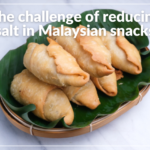Many food categories are impacted by salt reduction. Snacks is one category with the highest percentage of product launches with a reduced salt claim.
Salt reduction is an opportunity for food manufacturers
Awareness of salt reduction is growing. Encouraged by consumers’ expectations and regulations, food manufacturers are reformulating their recipes to reduce the salt content. It is an opportunity to go towards or reinforce a “natural” image with consumers. The reformulation of food recipes is also an opening for innovation and promoting products to new consumers such as the elderly or younger generations. 44% of consumers aged 18-34 claim to proactively seek product which improve their health.1
Why is reducing salt so difficult ?
Reducing salt is not as easy as it would seem because it plays multiple notes in food:
Salt is a taste enhancer. When you reduce it in food, the flavors are less intense. Consumers consider flavor and taste to be important when choosing a product.
- Shelf life
Salt plays a vital role as a preservative in foods. Traditionally, salt was used for conservation and is still the case today: it helps by extending shelf life, keeping food fresher for longer and therefore offers a greater convenience to consumers. Reducing salt may involve moving toward another current conservation method such as food additives.
Salt has been used for centuries to retain water in recipes. As such, salt reduction must be evaluated on a much broader spectrum while preserving the interests of consumers and industry.
- Price
The salt used in the formulas has an impact on the price of the final product. It is an inexpensive way to give food flavor. Reducing salt means finding tasty and cost-effective alternatives to maintain gustative attractiveness of products.
The food developers’ strategy for salt reduction can be rather long. Indeed, they must decide if they do a gradual decrease or an immediate salt reduction, which can be risky. Often a slow and gradual decrease is chosen for consumers to adapt to the taste of the reduced-salt product. Sometimes, consumers do not even notice the recipe has changed! Salt reduction has been a successful strategy in French delicatessen products in 2018: in a decreasing market (-2%), salt reduced products showed a rise of 12.5%2!
To get more insights about salt reduction
1 Global data, Ingredient insights: salt reduction, July 2018
2LSA, D’ici à 2020, Fleury-Michon fabriquera 100% de son offre de charcuterie en sel réduit, CAM P9 2018









